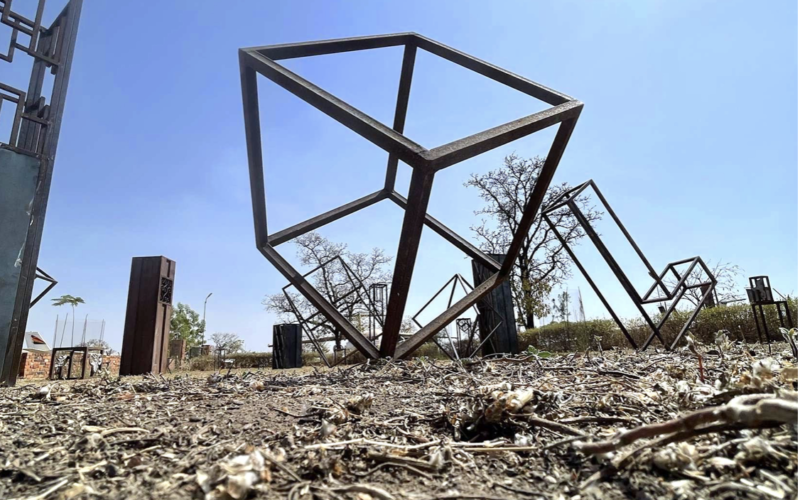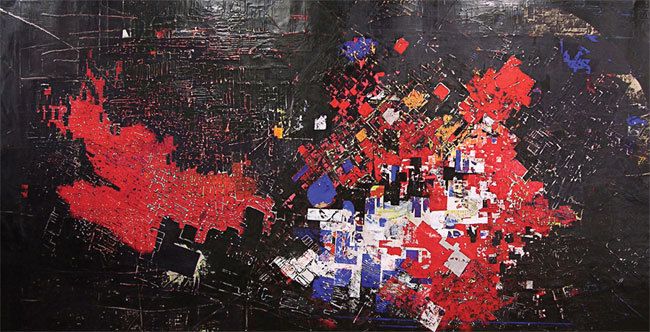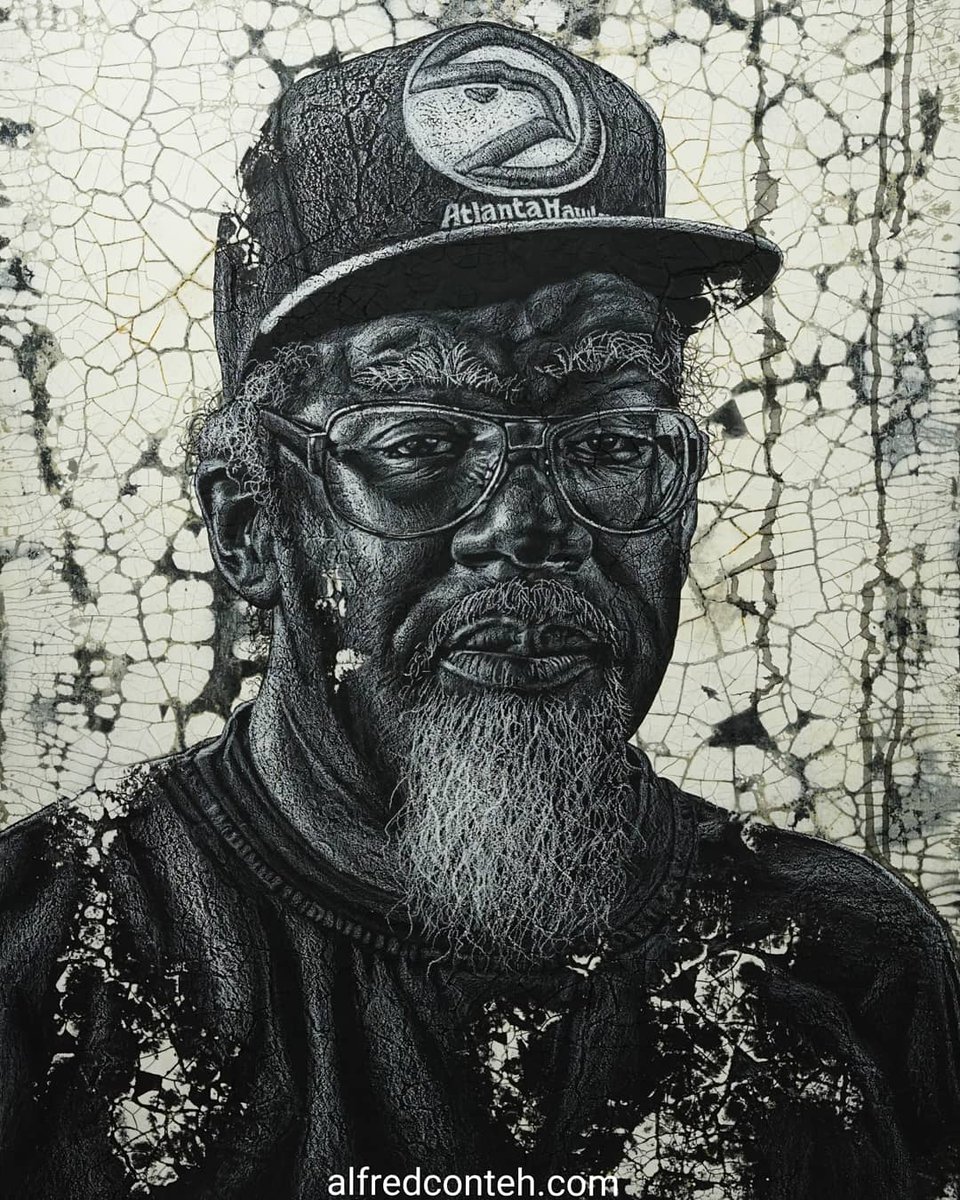Director’s Report by: Nuna Adisenu-Doe
KUM ASE: A Field Filled with Golden Spikes | AL HASSAN ISSAH
Curated by Tracy Naa Koshie Thompson
“Kumasi” or “Kum Ase,” which inspires Hassan Issah’s practice, has its origin in myths marked by the “Kum tree.” The Kum tree, after which the show is titled, is of special importance and a token to the birth of Kumasi and the consolidation of the first Ashanti states in the 17th century. Like the Kum tree of Kumasi, the fern in Adinkra (called Aya), lilies on fences, roses and leaflets in embroidery, peonies on scuba fabric, acanthus and palmettes of arabesque ornamentations—the garden weaves like a woven tapestry into garments, architecture, furniture, cultural and religious inspirations. They are cultural symbols imbued with meaning and beauty.
Museum of Science and Technology
ACCRA, GHANA
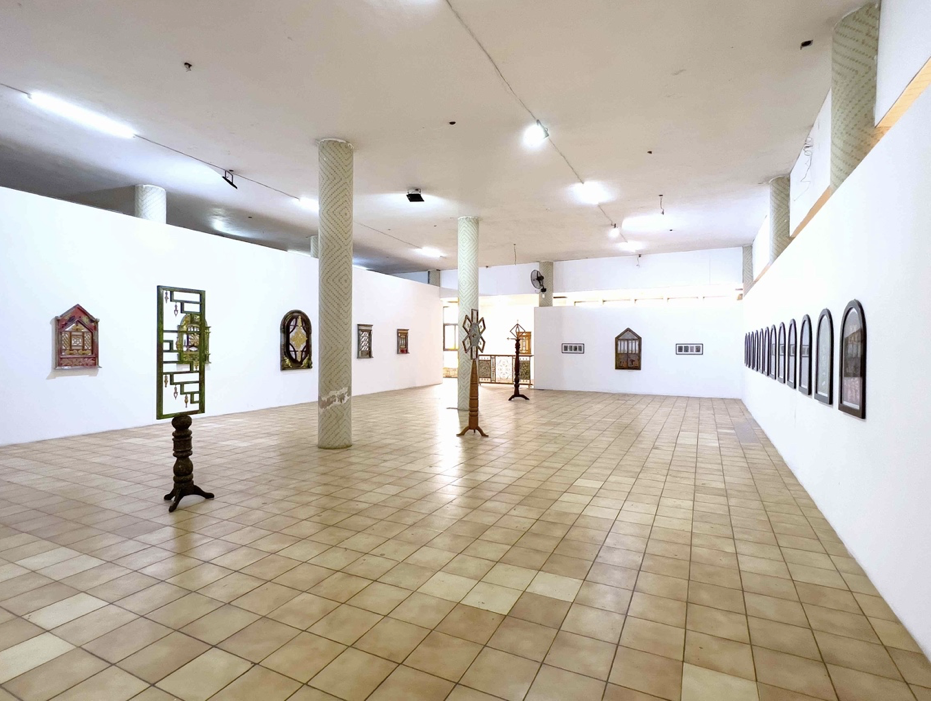
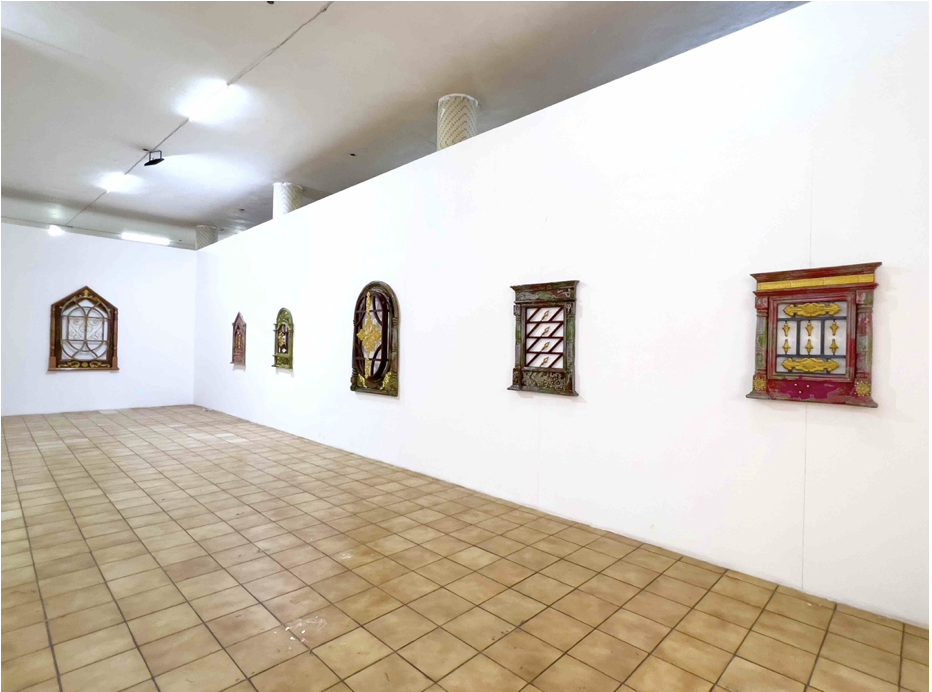
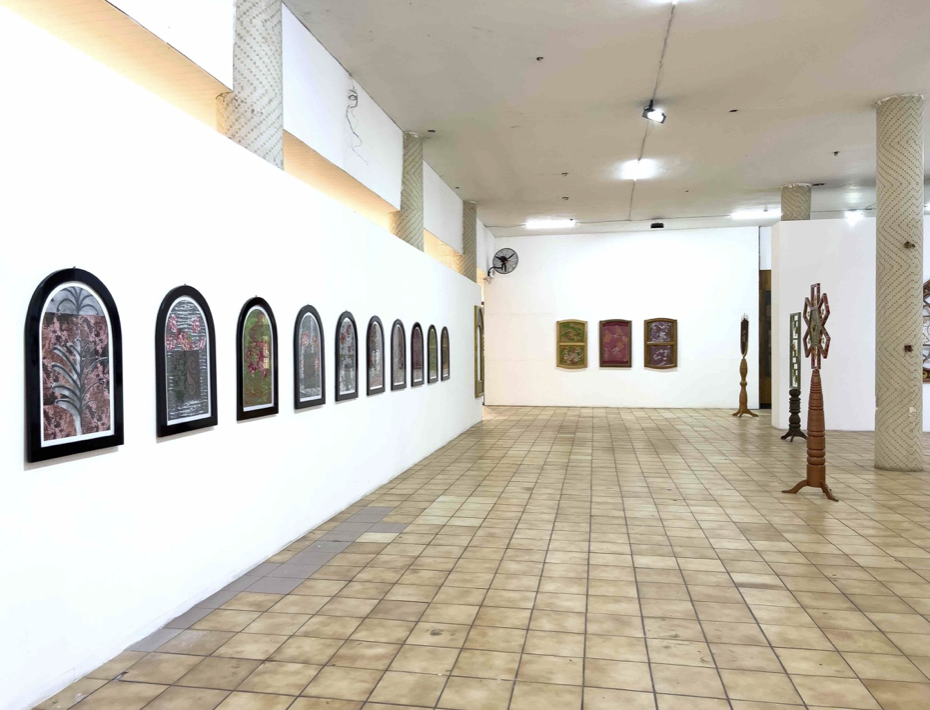
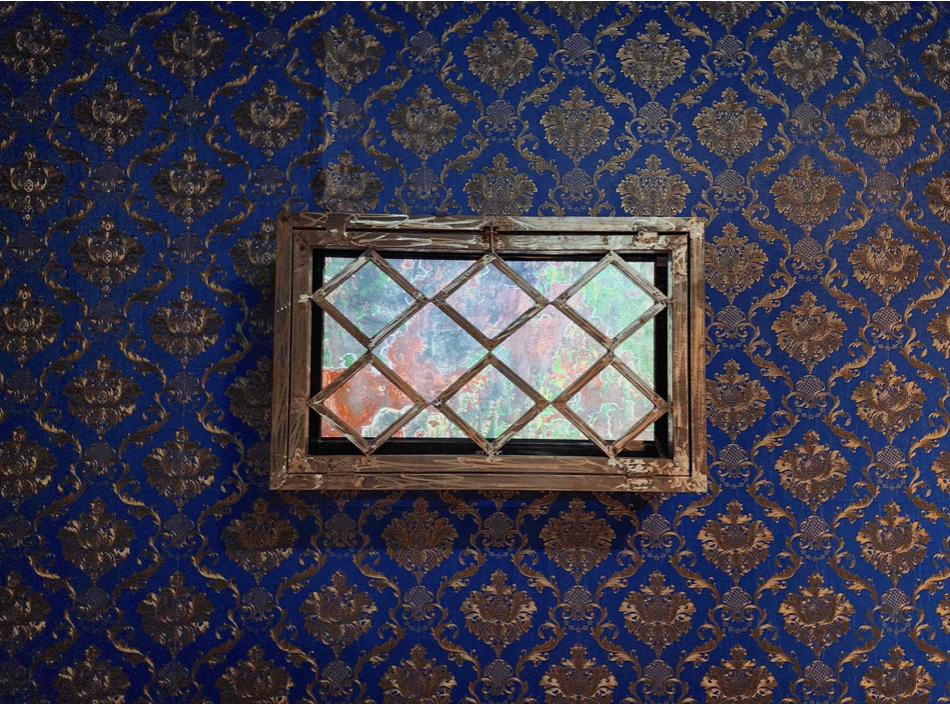
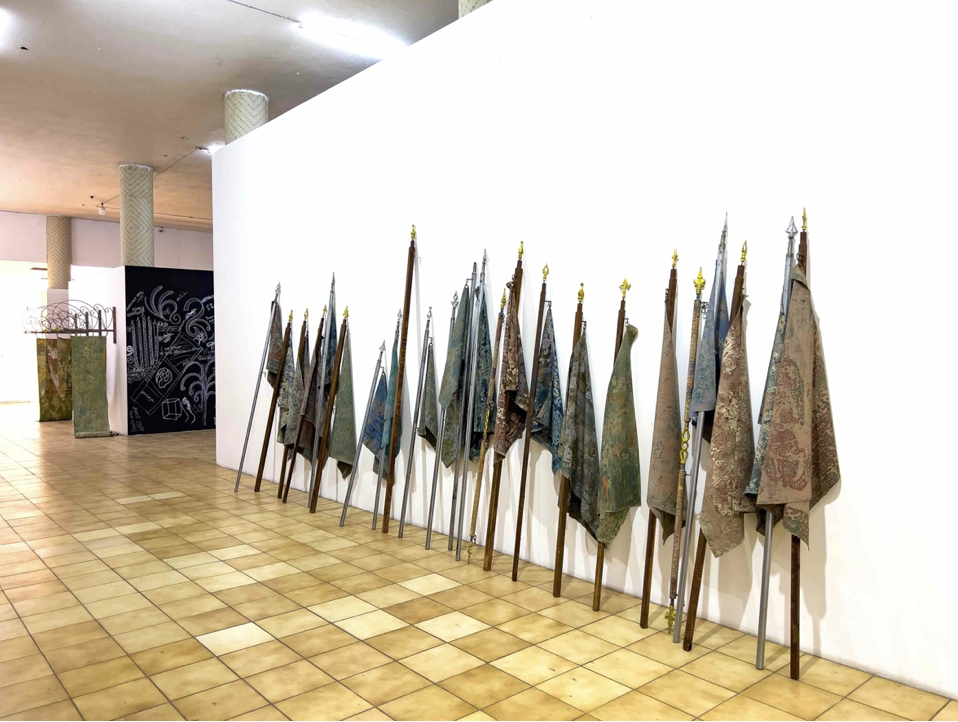
The gracefulness of vine twirls and flows of water fountains in the manner of calligraphy is simply enchanting, with Sankofa scrolls and creeping tendrils sprouting forth into shoots and branches in harmony. The expression of ornamentation is captured by repetition, with geometric ornamental abstractions interweaving in complex tessellations, which has no point of beginning or end of frame. In Hassan Issah’s works, the frame is neither the end nor a negative-empty space, as we find in ornamental architecture.
Hassan Issah lures us into a multiverse of photographic repetitions on metal frames that also repeat motifs. His repetitions do not only end with symbolic representations of scrolls but also the material disintegration of immiscible vegetable oil and water-based acrylic of his paintings. Water being polar and oil having a lower surface tension break each other into several droplets as oil tries to sit on water. The fields are filled with bountiful flows, of which Hassan invites us to Accra and Kumasi. Ghana to his indoor fields, playing with baroque and adinkra-infused minimalist forms. In Tamale, Ghana, he presents us with an unframeable experience on the fields of Red Clay Studio, where the seasons transform his rustic modular structures and flags.
Walking through the main entrance of the exhibition at the Museum of Science and Technology, visitors see a towering, decorative steel gate that is partly open yet never closes fully, an example of useless design that Hassan cites within his new body of work showing in Accra. Heavily painted steel pipes, ornamental cast aluminum, polished woodwork and colorfully embroidered applique all come together to form these hyper-exaggerated objects devoid of any utilitarian function.
In an immersive, dim-lit room clad with highly decorative Victorian wallpaper, hang chandelier-like round pieces with traces of floral scuba fabric and embroidered applique. In this same room are two caged television sets showing a video montage. Just as in the many local bars and TV rooms in the city where TV sets are locked in cages against burglary, Hassan takes this an extra step by introducing an extra layer of a semi-obstructed view of the video, which he considers as collaging the video.
KNUST Jubilee Mall
KUMASI, GHANA
In Kumasi, minimalist ideals of the object in relation to space and form are highly pronounced by intentional installation techniques employed within the exhibition space. One such decision is the deliberate inclusion of well-positioned spotlights to create shadows that extend the experience of the object beyond the artwork. The almost-10-foot false wall, which divides the space into two, does not only play the role of a prop. The curator introduces highly decorated Victorian styrofoam cornices to “frame” the wall at the top corners of the roof and floor of the wall, turning it into an art object in its own right.
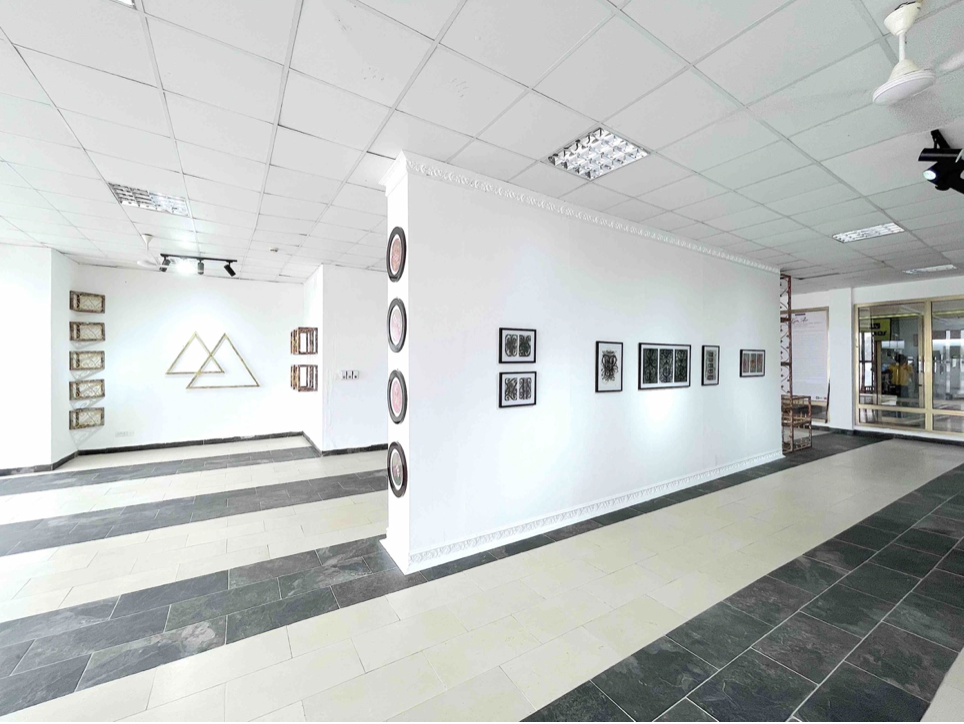
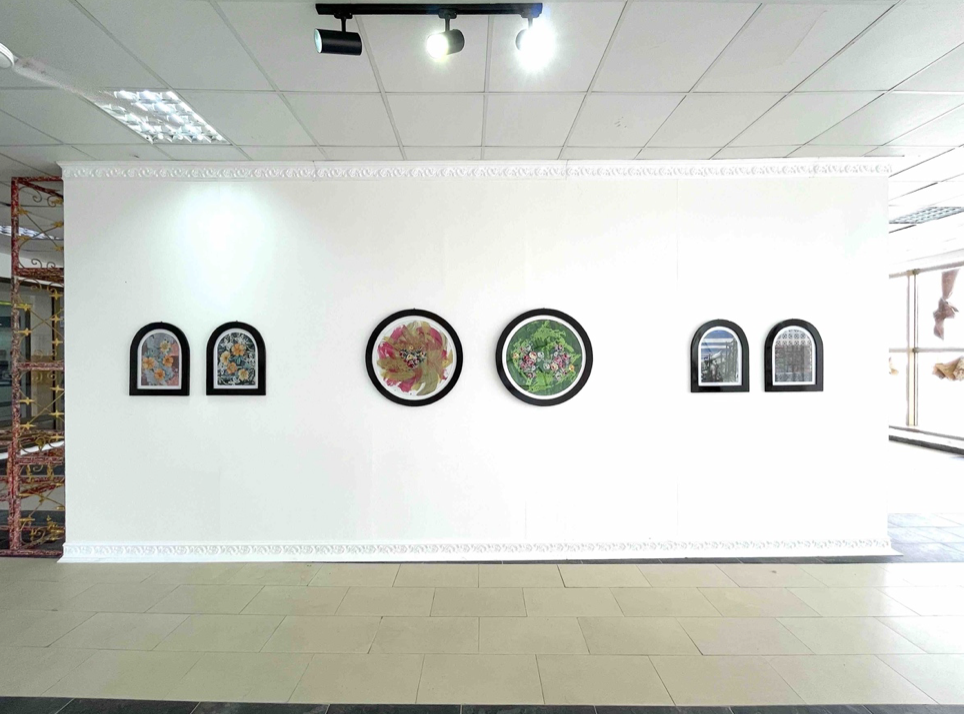
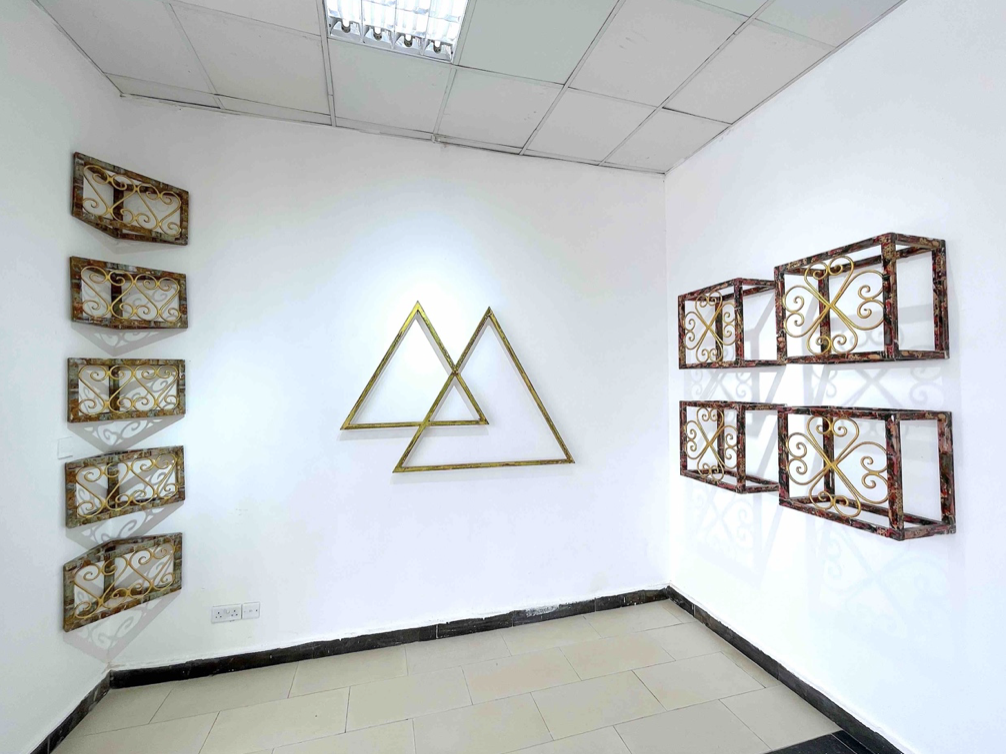
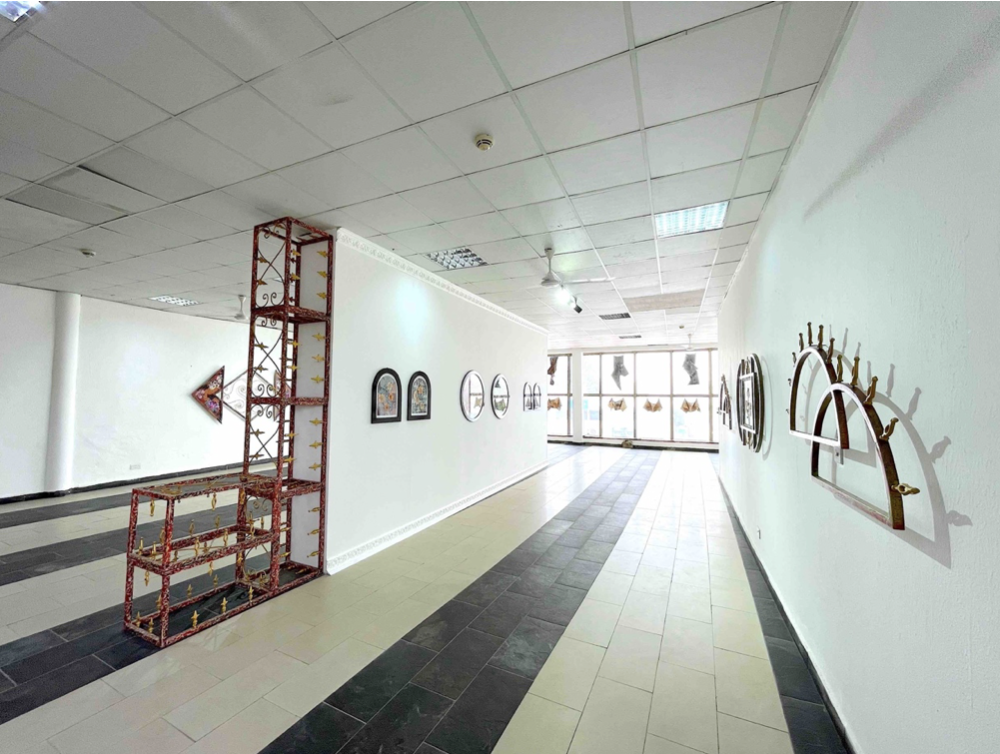
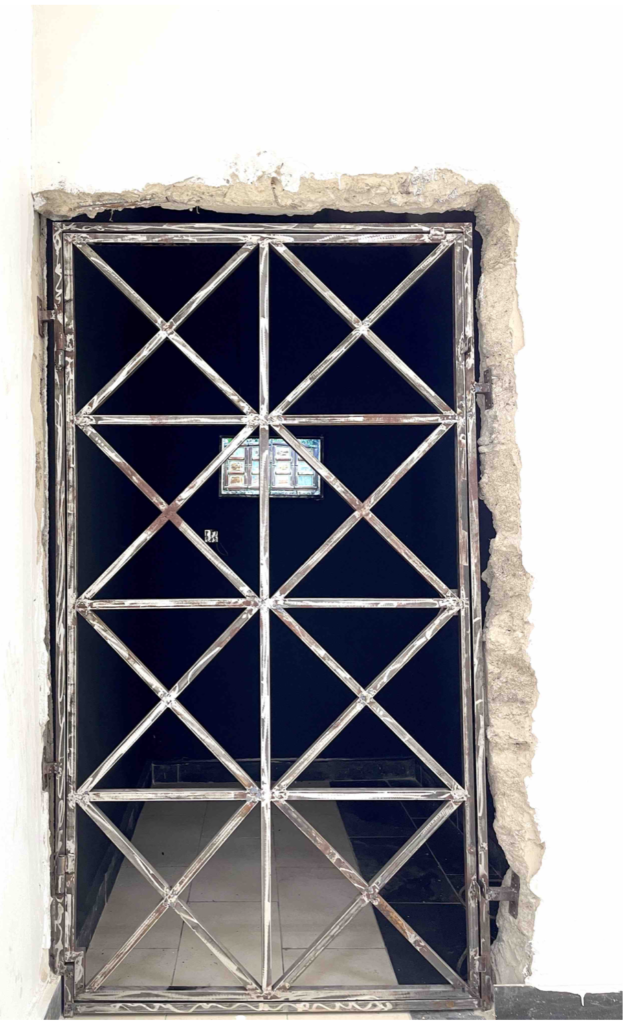
In contrast to the video installation in the Accra space, where the burglar-proof vault is directly on the TV screen, the Kumasi space, formerly a bank, had its five-by-three-foot vault space turned into the video room. Resembling a police holding cell, the dark room, with roughly exposed concrete around the edges of the doorway, remains in the same state. A steel gate is fixed subtly, now preventing access into the space. The viewer now stands about five feet away from the TV behind the gate, maintaining that sense of security the vault embodies.
From Greco-Roman influences to classic Greek architecture and minimalist forms, the exhibition is a striking reflection of the Kumasi cityscape, filled with chaotic contradictions of forms and materials.
Red Clay Studios
TAMALE, GHANA
The dry, hot and dusty harmattan season in Tamale is typically between November and March. Hassan’s life-sized and tiny, modular steel sculptures, which are similar in form to Sol Lewitt’s Incomplete Open Cubes and in the finish of Richard Serra’s brutalist steel sculptures, all together form a coherent sync with the dessert-looking fields of Ibrahim Mahama’s Red Clay Studio.
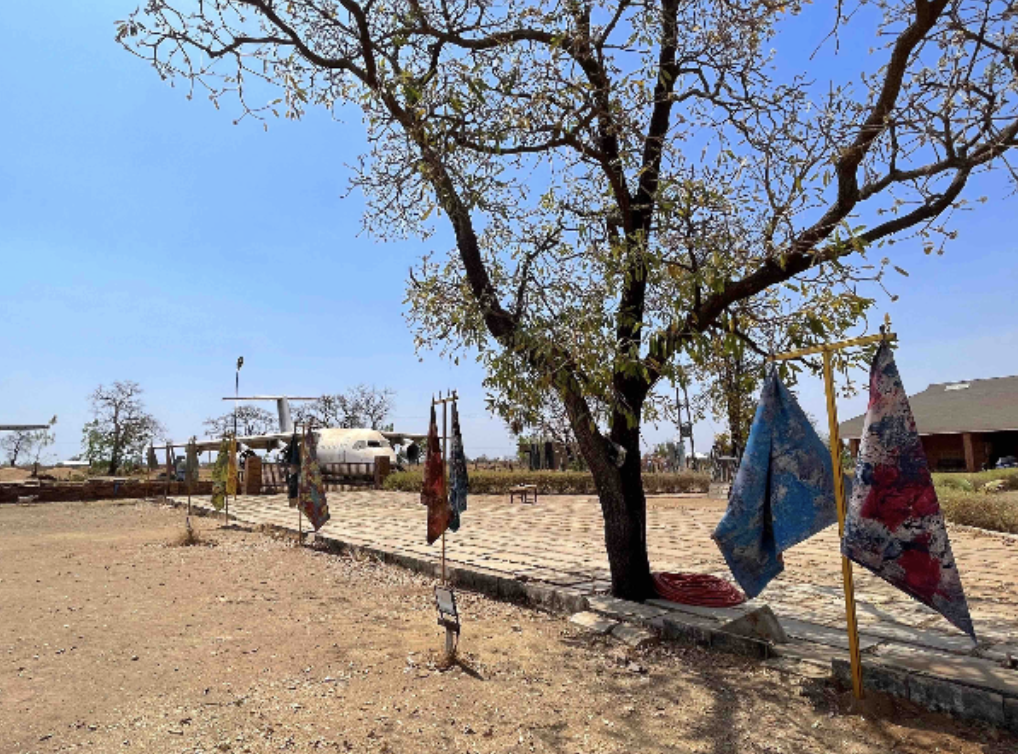
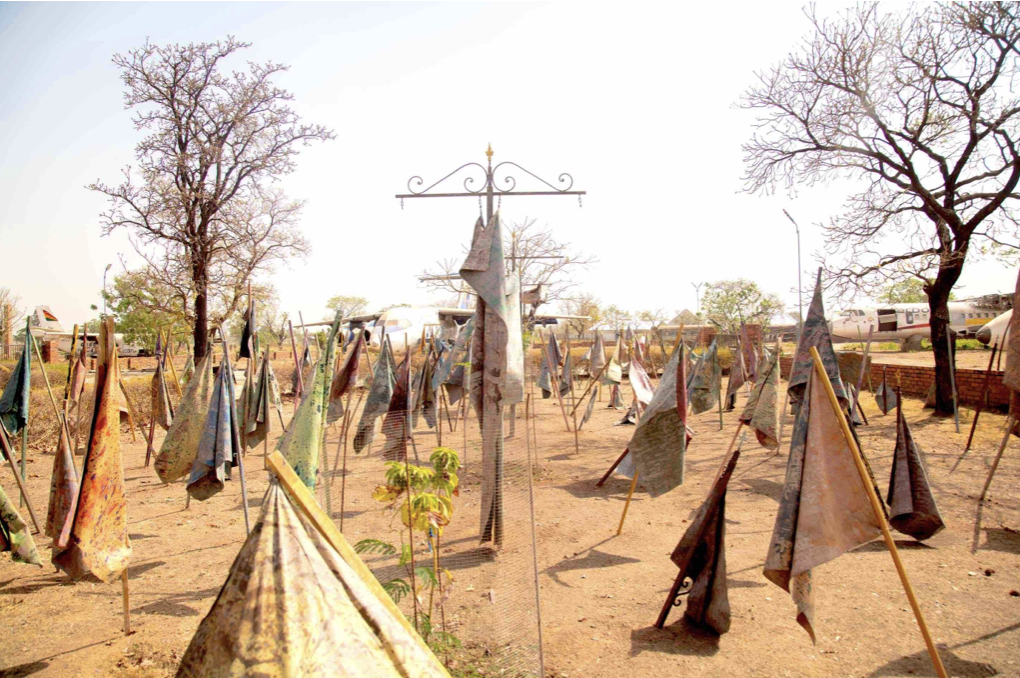
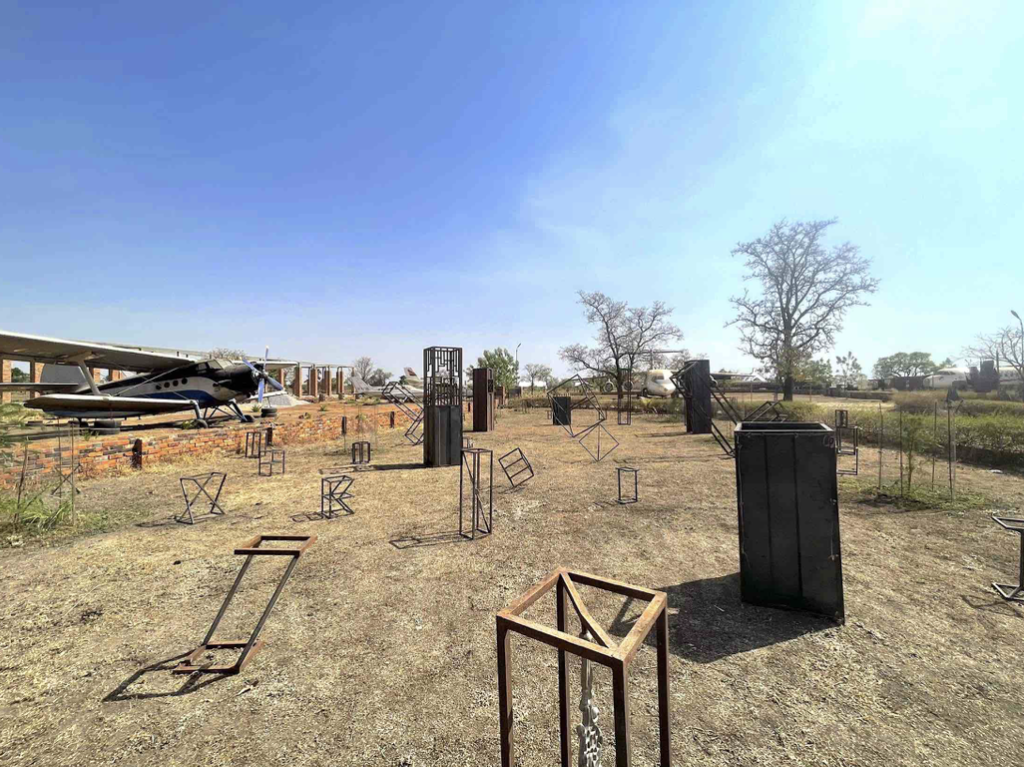
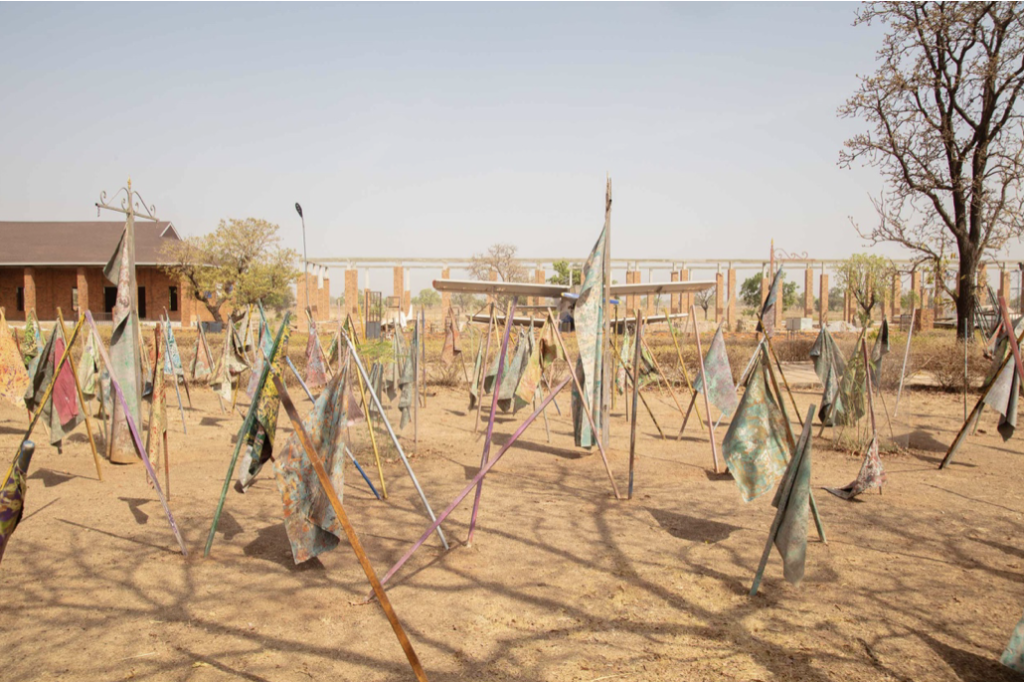
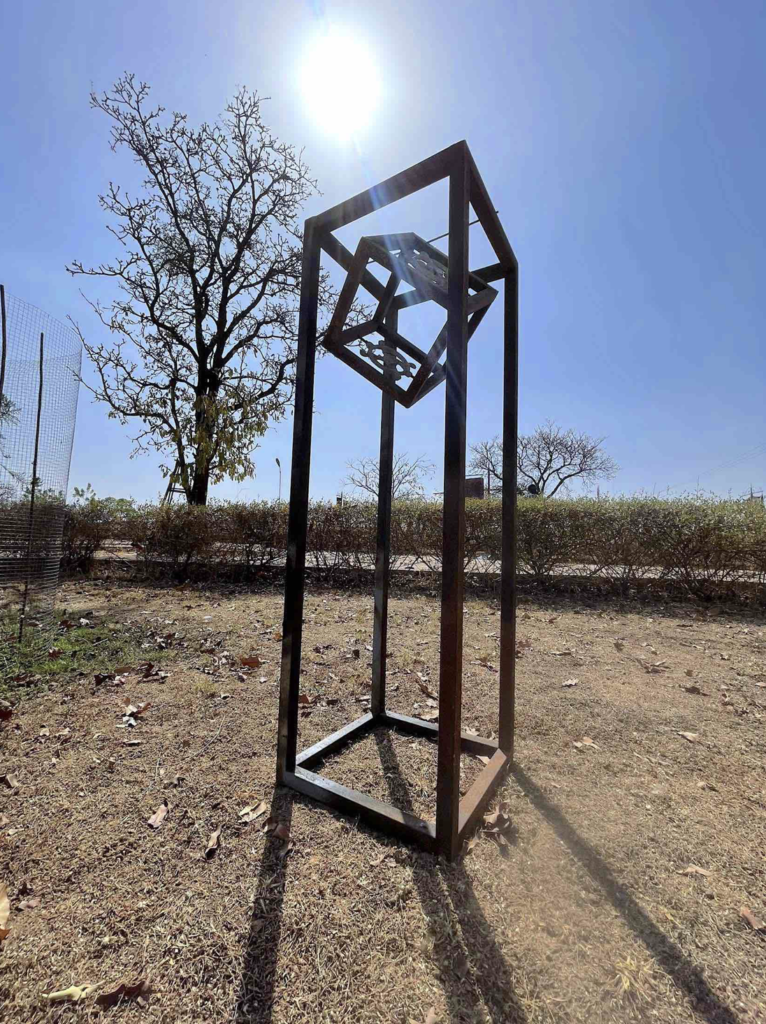
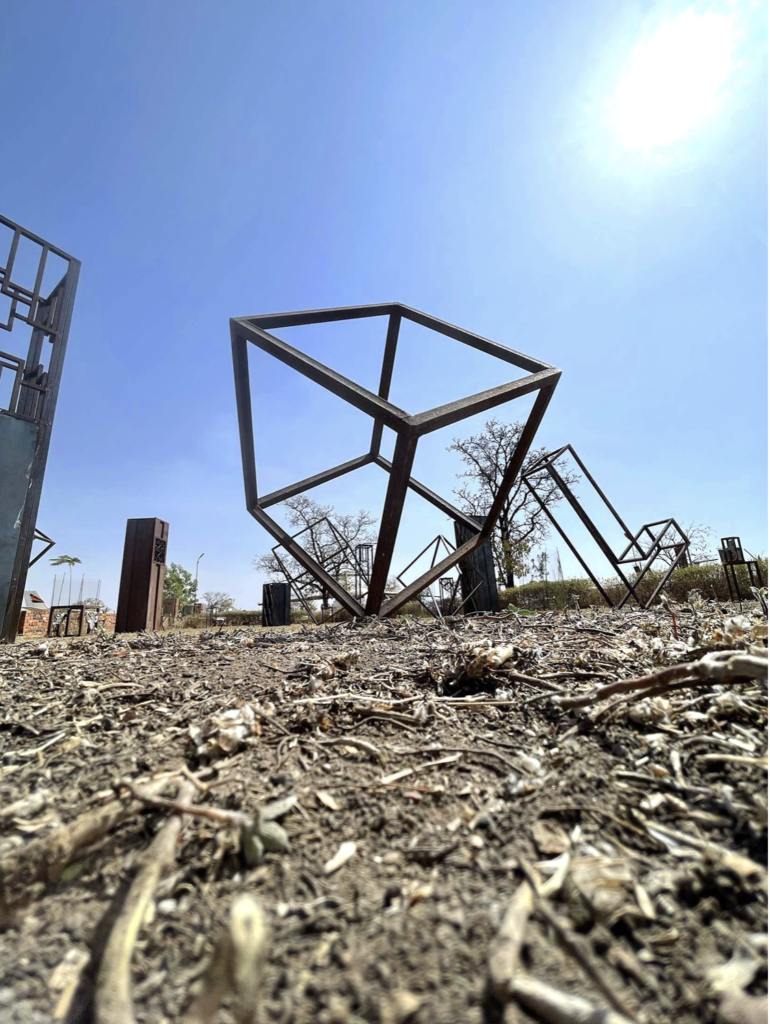
On the other side of the garden are over 350 flags hanging on steel and wooden spikes, some standing straight, others slanted. All the flags are painted in Hassan’s signature abstract style, achieved by layering two immiscible liquids: industrial acrylic paint and vegetable oil. Some very bright hues will soon fade, just like those from his previous outdoor exhibitions, all of which are included here.
In Tamale, he presents us with an unframeable experience on the fields of Red Clay Studio, where the seasons transform his rustic modular structures and flags.







